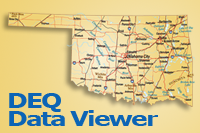Integrated Report – 303(d) & 305(b)
The Integrated Report
The Clean Water Act (CWA) requires states, territories, and authorized tribes to submit reports to the U.S. Environmental Protection Agency (EPA) regarding the health of the nation’s waters. CWA Section 303(d) requires states to develop a list of waterbodies that do not meet water quality standards. CWA Section 305(b) requires states to develop an inventory of waterbodies in the state, assess the water quality of these waters, and submit a report to EPA. The CWA requires both reports to be submitted to EPA every two years. Prior to 2002, each report was submitted separately to EPA. Beginning in 2002, EPA provided the states the opportunity to combine the two reports into a single “Integrated Report”. The EPA guidance helped the states reduce the reporting burden of submitting two separate reports. The specific requirements of CWA Section 303(d) and Section 305(b) are provided in the sections below.
Clean Water Act (CWA) Section 303(d) Requirements
The 1972 amendments to the Clean Water Act include Section 303(d). The regulations implementing Section 303(d) require states to develop lists of waterbodies that do not meet water quality standards and to submit updated lists to the U. S. Environmental Protection Agency (EPA) every two years. Water quality standards, as defined in the Code of Federal Regulations, include beneficial uses, water quality objectives (narrative and numerical) and antidegradation requirements. The EPA is required to review impaired waterbody lists submitted by each state and approve or disapprove all or part of the list.
For waterbodies on the 303(d) list, the Clean Water Act requires that a pollutant load reduction plan or Total Maximum Daily Load (TMDL) be developed to correct each impairment. TMDLs must document the nature of the water quality impairment, determine the maximum amount of a pollutant which can be discharged and still meet standards, and identify allowable loads from the contributing sources. The elements of a TMDL include a problem statement, description of the desired future condition (numeric target), pollutant source analysis, load allocations, description of how allocations relate to meeting targets, and margin of safety.
CWA Section 305(b) Requirements
The 1972 amendments to the Clean Water Act also include Section 305(b). The regulations implementing Section 305(b) require states to develop an inventory of the water quality of all waterbodies in the state and to submit an updated report to the EPA every two years. This process was established as a means for the EPA and the U. S. Congress to determine the status of the nation’s waters.
The 305(b) Report also includes: an analysis of the extent to which waterbodies comply with the “fishable/swimmable” goal of the CWA; an analysis of the extent to which the elimination of the discharge of pollutants and a level of water quality achieving the “fishable/swimmable” goal have been or will be attained, with recommendations of additional actions necessary to achieve this goal; an estimate of a) the environmental impact, b) the economic and social costs, c) the economic and social benefits, and d) the estimated date of such achievement; and finally, a description of the nature and extent of nonpoint sources of pollutants, and recommendations of programs needed to control them — including an estimate of the costs of implementing such programs.
2022 Oklahoma Integrated Report and 303(d) List – Approved by EPA Region 6 on August 18, 2022
The 2022 Oklahoma 303(d) List is the official list of Impaired Waterbodies for the State of Oklahoma. Expand the “2022 Integrated Report” menu above for the 2022 Integrated Report and associated documents. The 2022 Integrated Report GIS layers are available to view and download at: https://gis.deq.ok.gov/maps/.
Contact Watershed Planning
An interactive map of Oklahoma’s waterbodies is available at http://gis.deq.ok.gov/maps/.


